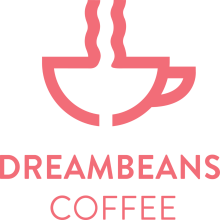Decaf Coffee:
The Mountain / Swiss Water Method.
Our decaf coffee, Decaf Dream is more popular than we ever anticipated when we introduced it. It’s easy to see why. Decaf coffee is getting more popular all the time, even among discerning and dedicated coffee drinkers. Many people drink caffeinated coffee during the day but switch to decaf in the afternoon or evening as they start to relax after a busy day. Our Decaf Dream tastes so good, it’s like drinking a really good speciality coffee, but without the caffeine. It’s no wonder it’s developing such a following. But this post isn’t about Decaf Dream, it’s about the method by which the coffee is decaffeinated, and the difference between this natural decaf method and the chemical process that some other coffee producers use.
The Mountain Water and the Swiss Water Method are completely natural and chemical free methods of removing caffeine from coffee without damaging the bean or extracting any of the coffee oils and aromas.
The oldest method of decaffeinating is the direct solvent method, in which the coffee beans are steamed for 30 minutes and then rinsed for 10 hours with a solvent, such as methylene chloride or ethyl acetate. The solvent bonds with the caffeine molecules, stripping the caffeine out of the beans and allowing it to be removed.
We never buy coffee beans that have been decaffeinated using this method. We simply do not want coffee that has traces of methylene chloride or ethyl acetate remaining in it. All our decaf is decaffeinated using the Mountain or Swiss Water Method. It’s more expensive but it’s much better.

Decaf Coffee tastes much better using the water method of decaffeination.
Chemical Decaffeination
Chemical decaffeination is the process of using chemical solvents to remove caffeine from coffee beans.
The most common solvents used for industrial decaffeination are methylene chloride and ethyl acetate. Methylene chloride is a chlorinated hydrocarbon that occurs in ocean water. Methylene chloride is allowed by the U.S. Food and Drug Administration as a solvent for food additives and flavorings, but can be toxic if ingested in high doses. It is also used as paint stripper and a degreasing agent.
Ethyl acetate is a colorless liquid that evaporates easily when exposed to air. The in the USA, the FDA allows its use as an additive in certain processed fruits and sugar syrups but does not permit it to be sprayed directly on foods. Generally, the coffee beans are soaked in the solvent to extract the caffeine, then placed in a charcoal filter or other means to remove the solvent.
Bizarrely, coffee decaffeinated this way is often marked “naturally decaffeinated” because the chemical solvents are supposedly removed and “magically” disappear along with the caffeine, but it doesn’t seem like a very “natural” process to us.
Decaf The Mountain / Swiss Water Method
The Mountain Water or the Swiss Water Method uses only water and osmosis to decaffeinate coffee, rather than chemicals. Green coffee beans are first soaked in clean hot water, which causes the caffeine to be released from them into the water. This solution is known as a green coffee extract. In a separate tank, the caffeine molecules are selectively removed by using activated charcoal filters, which have been designed to attract only caffeine molecules. In this case, “activated” means that the charcoal has been exposed to oxygen at high temperatures, which opens up millions of tiny pores within it so that it can absorb more molecules. The water from the first tank is pumped through this charcoal filter and back into it. This removes nearly all of the caffeine from the water but leaves behind most of the coffee’s other soluble compounds.
The resulting solution is now free of caffeine but retains most of its flavor components. The coffee beans are then re-immersed in this solution so that they will regain their flavor components while losing their caffeine content.
Once the caffeine has been removed from the green coffee extract, it is re-used to decaffeinate a new batch of raw beans, which will regain their flavor components after several hours in this solution but will not regain their caffeine content because it has already been removed by the charcoal filter. As this takes place, both groups of beans achieve an equilibrium whereby they have approximately equal concentrations of flavor compounds and caffeine. All that remains now is to dry the decaf coffee beans and roast as normal. As always, the skill is in the roasting.

The Swiss water method makes the best decaf coffee.

